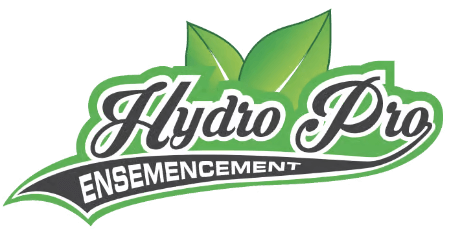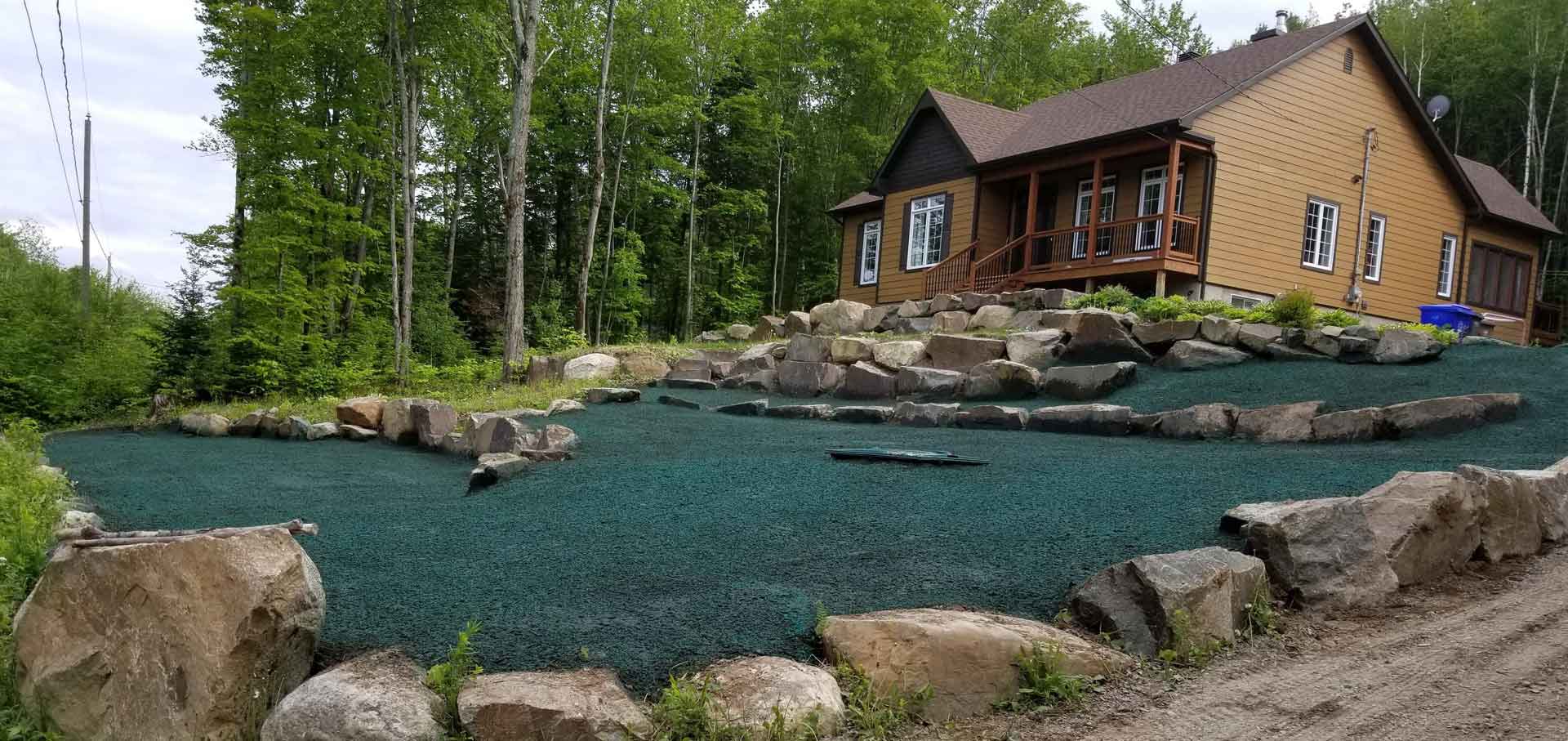
Ecological lawns: a step for biodiversity
For most of us, lawns are associated with our fondest childhood memories, a favorite social spot, and the scent of summer and freedom, but what do we really know about the role of these green spaces in urban environments? Containing a complex ecosystem , necessary for the conservation of healthy biodiversity , their environmental role is particularly valuable. Learn more about the major impact that ecological lawns can have on the future of our planet .
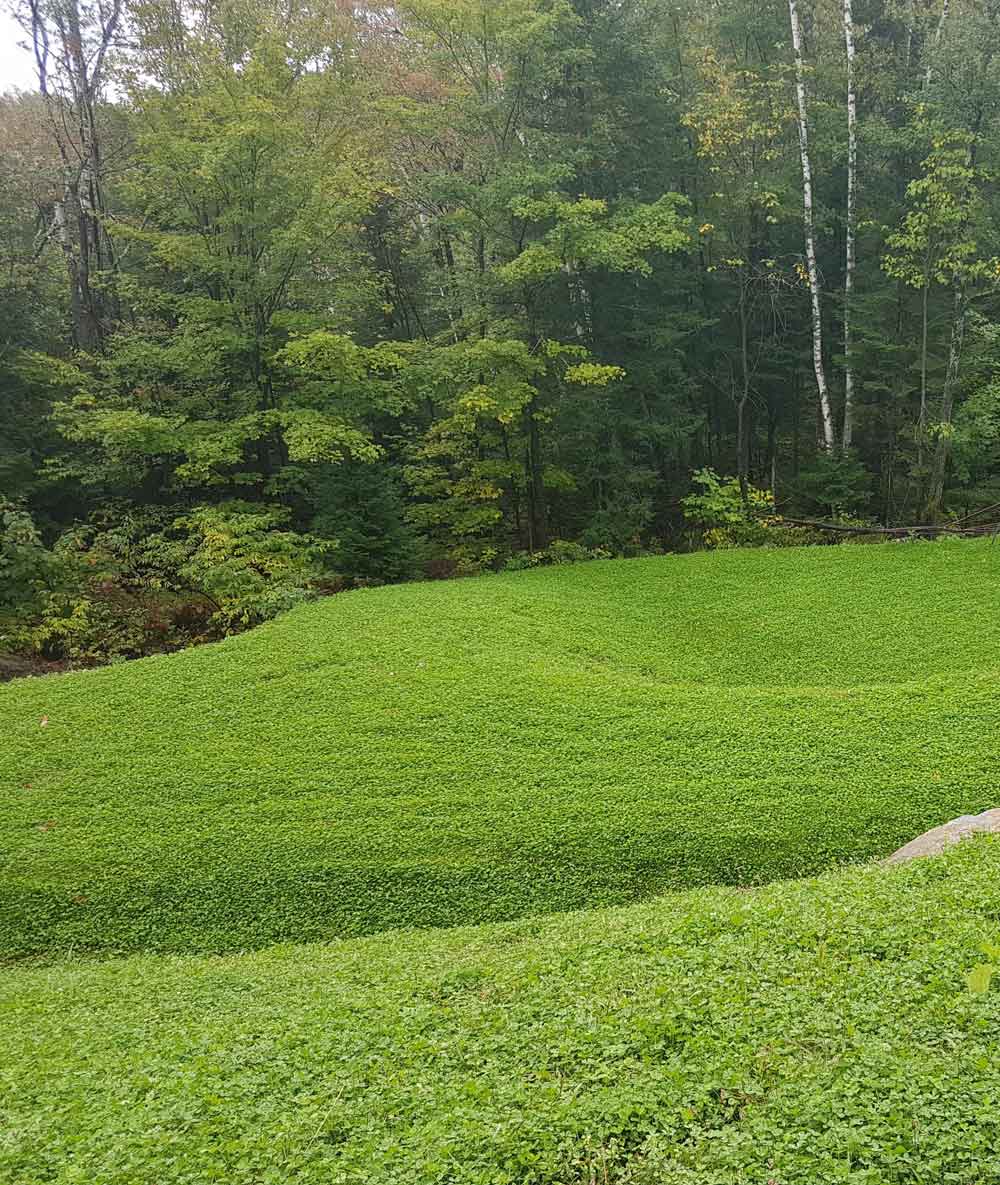
Is biodiversity in urban environments important?
We hear about biodiversity everywhere. But what is it? What is its true importance , especially in urban areas?
In fact, it is important to understand that, even in the heart of the city or in the most populated residential neighborhoods, urban flora and fauna both have a role to play in the well-being of our planet. Indeed, ecosystems in urban environments, from private lawns to neighborhood woodlands, are primarily characterized by their heterogeneity. The diversity of these spaces is the product of a mixture of residues from natural environments, industrial landscapes, as well as agricultural land located near urbanized areas. This biodiversity is therefore composed of exchanges between so-called "urban" species and those living on the periphery.
With urbanization also comes distinctive living conditions, both in terms of temperature , brightness, winds, humidity, and soil impermeability , which strongly influence the drainage of rainwater. These conditions impact the composition of urban biodiversity , causing the development of fauna and flora that are specific to these environments.


Hydroseeding includes a huge variety of seeds that adapt to any type of terrain, flat, steep, full sun, shade, wet soil, arid soil. With clover, without clover. That's why hydroseeding is the ideal solution for your wallet, your land, and your precious time! In addition to offering fast and professional service, we guarantee it 100%. If, following your treatment, we need to come back to seed certain areas again to ensure the quality of the work, we will do it, FREE OF CHARGE!
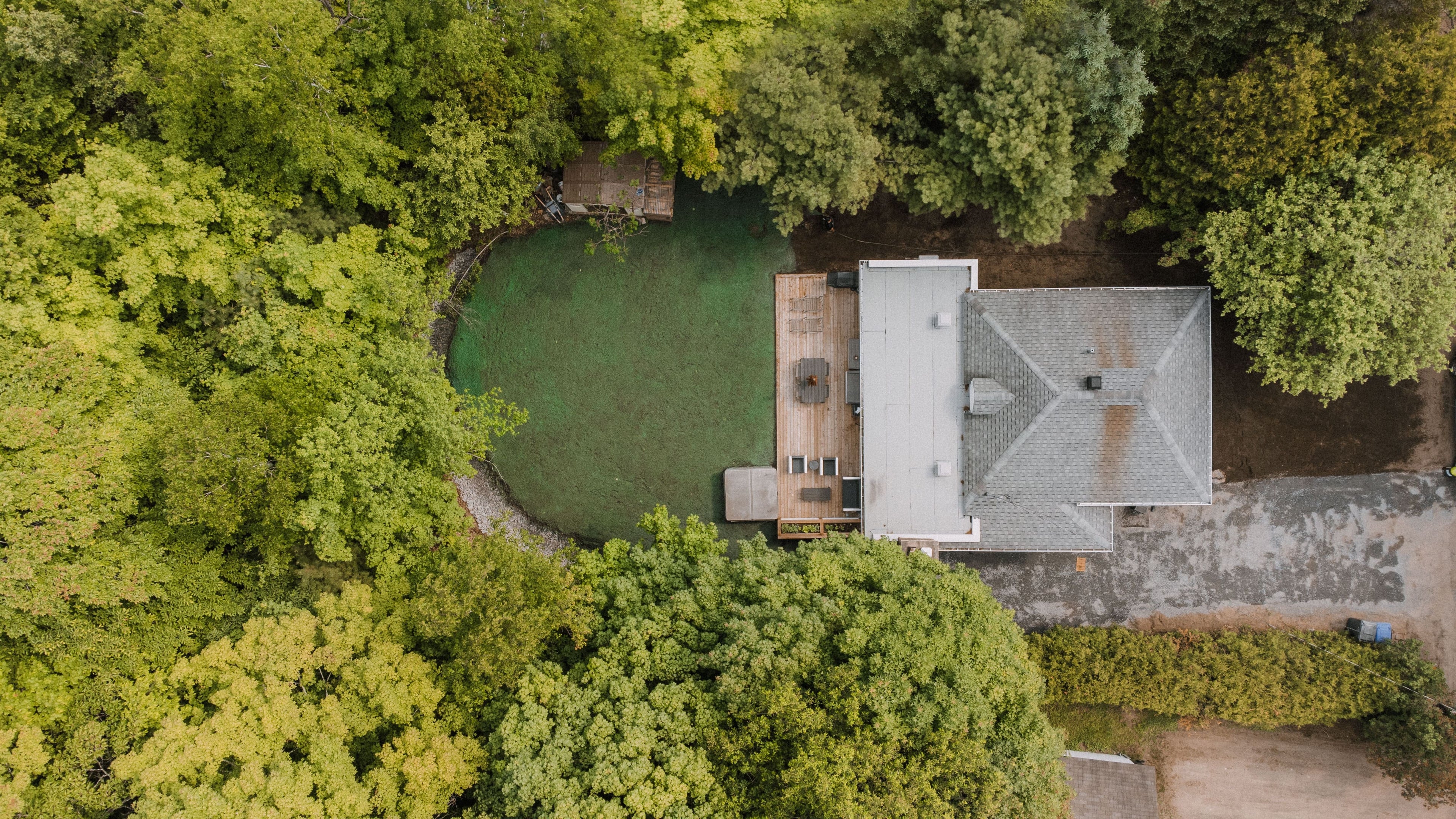
What is biodiversity?
By definition , biodiversity refers to all living beings and the ecosystems in which they live. The interactions between different species, as well as with their environments, are also included in this designation.
Biodiversity could also be subdivided into three interdependent levels :
- Ecological diversity – Refers to all environments that support living organisms. From oceans, to meadows and forests, to the small pond at the bottom of the garden or the planters in the city, to the contents of a cell.
- Specific diversity – Refers to all living species, in relation to each other (predation, cooperation, etc.) and to their living environments.
- Genetic Diversity – In short: we are all different! Indeed, genetic codes, even within the same species, vary from one being to another.
In summary, an imbalance in a single element contained in one of these levels can, by correlation, have a major impact on nature as we know it today.


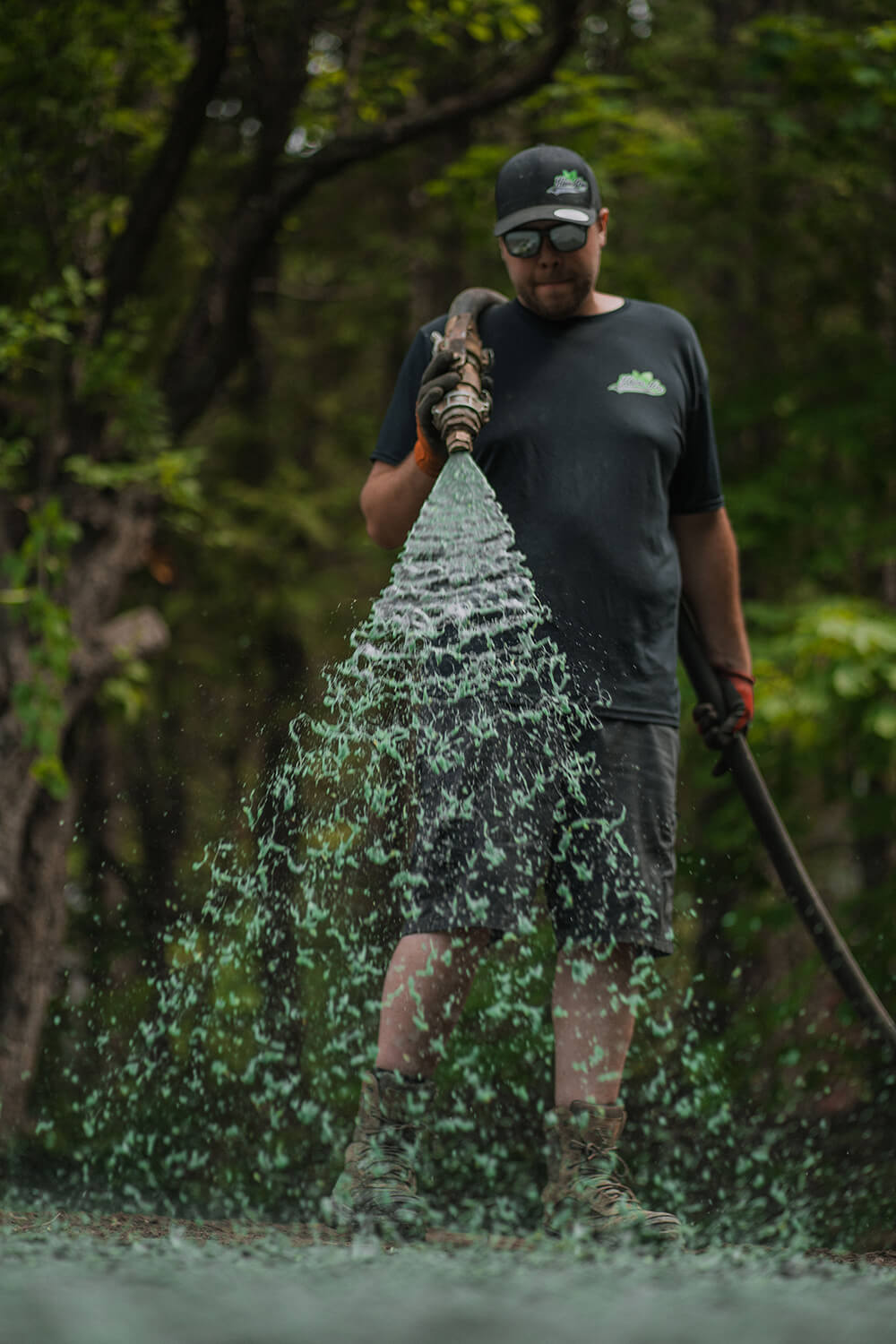
What threats weigh on the balance of an urban ecosystem?
It goes without saying that one of the greatest threats to biodiversity is the human species . But what human constraints on nature are we talking about, exactly?
- Destruction and artificialization of natural environments: The simple modification of the initial functions of a plot of land, such as for example transforming virgin meadows into agricultural land or woodlands into real estate districts, has the consequence of causing the disruption of certain species as well as the degradation of existing ecosystems.
- Global climate change: Our CO2 and greenhouse gas emissions are causing the migration of animal and plant species, as well as accelerating certain growth cycles. Climate change is thus contributing to the modification of the living conditions of living species, forcing them to relocate or adapt their lifestyles to a new reality.
- Pollution: All forms of pollution affecting water, soil, and air result in the destruction or modification of ecosystems and species. A prime example is the overuse of pesticides.
- Introduction of invasive species: Exotic species have the potential to negatively impact native species in natural environments and the functioning of ecosystems. They are therefore harmful to both certain local economic activities and human health.


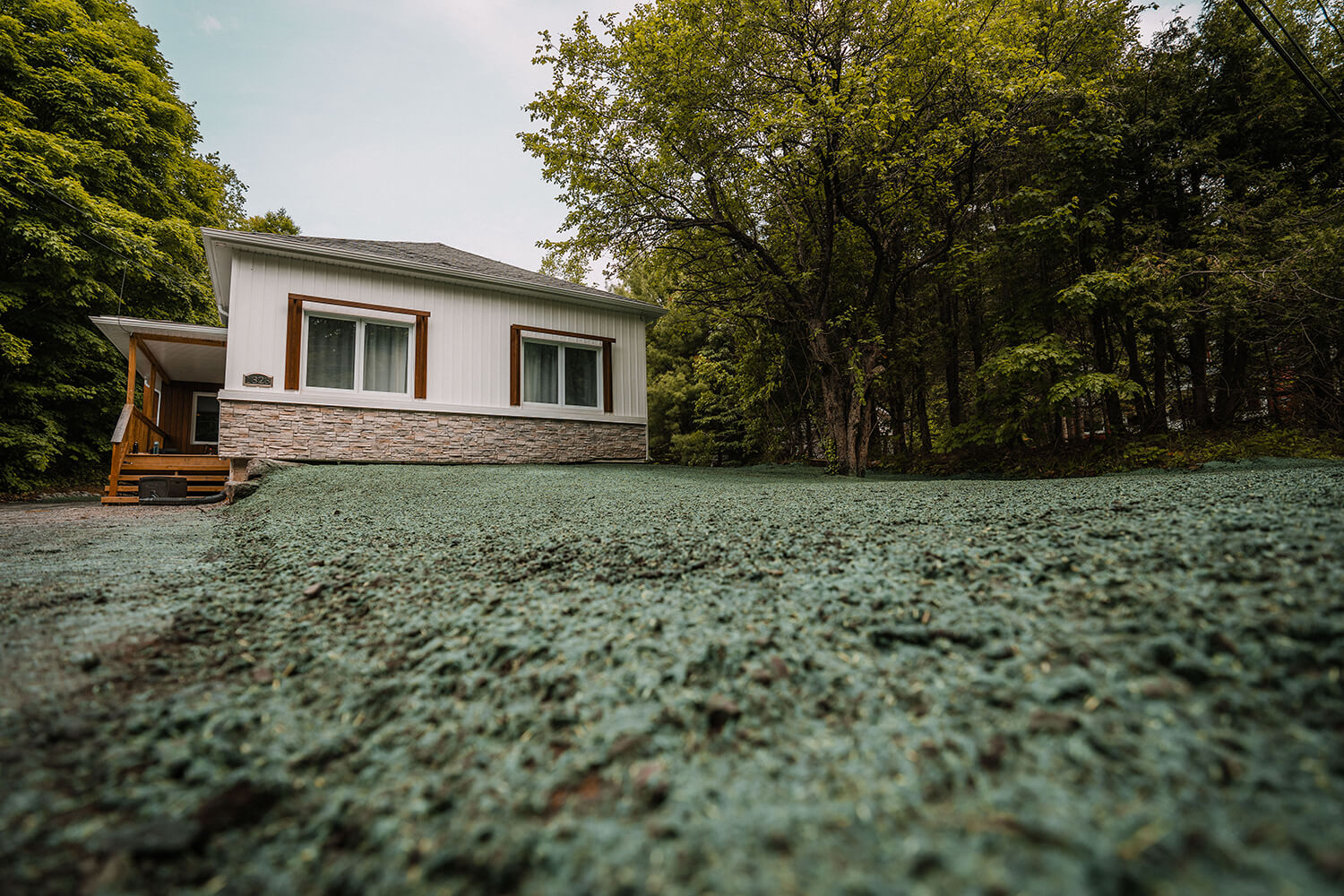
The valuable role of your yard on biodiversity
Now that we have a better understanding of the importance of urban biodiversity, let's return to the famous lawn that is an integral part of the aesthetic appearance of our properties in urban areas. Going far beyond appearance, natural grass actually has many environmental benefits .
Looking for a way to do your part with a simple gesture? By choosing to adopt an ecological lawn in your yard, you contribute to a richer biodiversity in your neighborhood. Indeed, a lawn composed of a mixture of plants well adapted to your region has the effect of creating a more harmonious environment for many species. When you think about it, all natural green spaces (woodlands, meadows, forests, etc.) contain a mixture of plants , so why not our lawn at home!
Sometimes considered weeds, some species actually combine to stabilize the soil , in addition to contributing to its diversity. Furthermore, these plants live in symbiosis with other living beings. The whole thing creates a living, healthy and diverse soil , sometimes called a sustainable lawn . These same greens that grow among the blades of grass include several flowering species. Where there are flowers, there is pollen, and where there is pollen, there are pollinating insects .
Today it is no longer a secret that insects such as butterflies, bees and bumblebees play a decisive role in agricultural production, the health of grasses and the preservation of many plant species.
In addition, organic lawns, which are diversified thanks to an ecological grass mixture, channel the sun's energy to oxidize water, reduce CO2 and thus generate carbohydrates that serve to feed many organisms and species that take refuge there (insects, birds, amphibians, fungi, worms, etc.). In other words, the more eco-responsible the lawn , the more biodiversity there is.
In addition to being an important source of life, ecological turf protects our soils from erosion, regulates water and nourishes groundwater.


“Great, quick and inexpensive alternative to turf grass”
Mrs. Hogue, loyal customer since 2010, Saint-Sauveur
★★★★★
How to create an ecological lawn: our advice!
But how do you go about ensuring your yard benefits from an eco-friendly lawn ? Here are some interesting solutions to consider at home.
-
Hydroseeding: an ecological and sustainable alternative
Hydraulic seeding , also called hydro-seeding , is an alternative process to the installation of peat (rolled turf) which is fast , efficient and inexpensive . It consists of projecting a mixture of seeds, fertilizer, mulch, natural binding agent and water at the desired location. It is also possible to adapt the mixture according to the desired result, the environment and the slope, for a perfect match for your soil.
This process has many advantages , such as the ability to add complementary grasses with distinct qualities to the grass seeds. White clover , for example, is ideal for erosion control , in addition to being self-fertilizing . The nutrient -rich mixture in which the seeds are immersed and the presence of water help to start the germination cycle before they even touch the soil, allowing for faster establishment. In addition, the mulch in the mixture helps retain moisture , holds the soil in place and acts as a "mini-greenhouse" , providing the ideal conditions for the development of the chosen seeds.
Would you like to learn more about this process? Don't hesitate to take advantage of the advice of hydroseeding specialists to guide you on the best choices for your terrain.
-
Prioritize good lawn mowing management
The preconceived idea of a "healthy lawn" is sometimes misguided. While so-called "English lawns" (cut to 3 cm or less) may seem like the best solution for some, it is important to understand that they are not the most ecological and vibrant lawns . Depending on the conditions and the time of year, it is indeed possible to see certain advantages in keeping a longer lawn. However , for a new lawn , it is also essential to follow certain recommendations to optimize the growth of your lawn:
- After the first month (30 to 45 days), a first mowing of your lawn is suggested.
- Initially , mowing regularly can help with better growth.
- Once your lawn is well established (after around 3 months), it will then be possible to space out the mowing frequency, and thus optimize its biodiversity.
- Although the first mowing of the lawn in spring can be done a little later, giving all the little flowers, such as dandelions or white clover, the chance to flourish and survive the mowing, mowing your lawn once or twice will not only have negative impacts. More than useful for many pollinating insects , essential for the fertilization of flowers, fruit trees and gardens, the important thing is to leave a little space for small wild flowers during this pollination period.
Leaving the grass clippings left behind by mowing can also be a useful strategy. In addition to saving you maintenance time, these nutrient- rich clippings can do wonders for your soil as they decompose. This interesting principle is also called grasscycling .
-
Transforming an existing lawn is possible!
Transforming a lawn into a more eco-friendly version is a possibility that is within everyone's reach. To do this, you can gradually enrich it with complementary species such as fescue, white clover or bluegrass. This creates a more sustainable , resilient and biodiverse natural lawn .
For this process to work on a dense lawn, the soil must first be properly aerated by removing a few cores of soil. Several types of hand aerators can be used to achieve this. Afterward, a natural lawn fertilizer must be applied to thoroughly nourish the soil.
If your lawn is poor and you want to enrich it, it is strongly recommended to consider hydroseeding as an optimal solution for a uniform and rapid result.
-
Prioritize eco-responsible lawn maintenance
Responsible backyard maintenance isn't limited to choosing seeds, gardening tools, or mowing frequency. To create a more eco-friendly green space , it's ideal to implement environmentally friendly maintenance techniques. One simple idea would be to swap traditional garden watering for drip irrigation, which can save 15% to 20% on water, for example. Another possible technique would be to collect rainwater and use it for watering rather than drinking water from the outdoor tap.
Installing eco-shelters is also an option to consider. Shelters such as insect hotels or nest boxes encourage biodiversity and, in doing so, take care of some of the maintenance for you by playing their part in balancing the local ecosystem.
-
Avoid the use of pesticides and other chemicals
For an ecological lawn that promotes healthy biodiversity , it is recommended to favor manual work to remove weeds rather than the use of chemical weedkillers . Also favor the use of natural fertilizers to nourish the soil. Finally, it goes without saying that the use of pesticides should be avoided, or reduced to the strict minimum.
In conclusion, for an ecological lawn in an urban environment , every little gesture counts! To protect biodiversity , and encourage the role of pollinating insects in nature , for example, it is important to favor a lawn composed of mixed crops and to change our maintenance habits. With these tips, obtaining a more environmentally responsible lawn is certainly within everyone's reach!

Let's make your new project come true together!
Hydro Pro offers quality work tailored to the needs of each of its clients. Regardless of the soil type, the topography of the land, or your personal tastes, our experts guarantee your satisfaction! Offering a wide variety of eco-friendly products from Quebec, our experts will be able to advise you!
